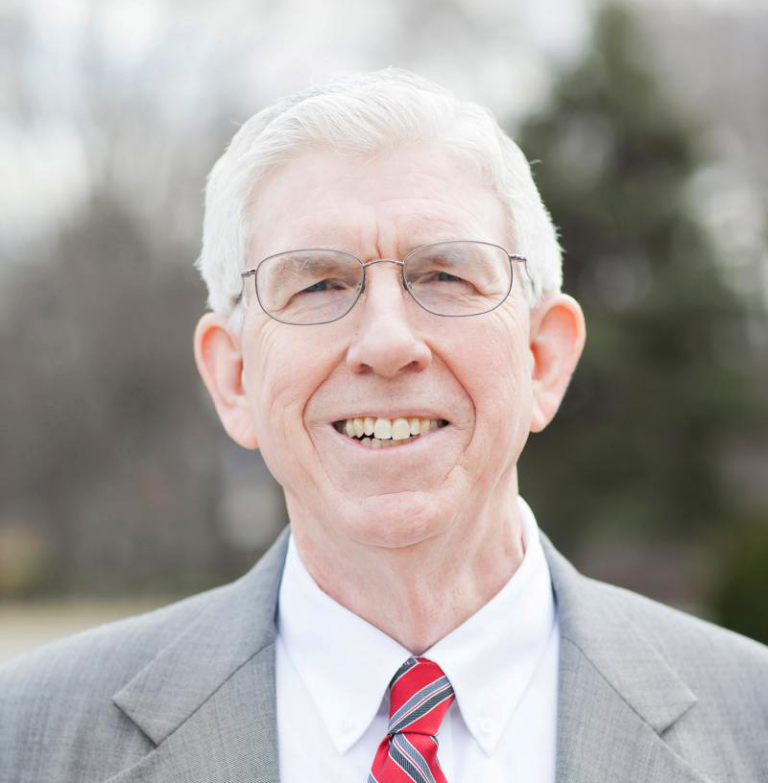Acts 9:1-22
l
Introduction: The church has advanced through a great outpouring of the Holy spirit in miraculous communicative and converting power on the day of Pentecost. Miraculous events have gained attention, but conversion has come through the preaching of truth under the power of the Holy Spirit. The gospel has reached “a great many of the priests” (6:7), the Samaritans (8:5), a eunuch (8:36), and now we find that God converts one of the greatest persecutors of believers, Saul of Tarsus. Salvation has come to a world hostile to God’s righteousness and holiness; those who believe and conform to this holy gospel will find the hostility of the world turned toward them. Salvation does not cure one’s problems with the world but enflames and intensifies them (John 17:14). Even so, Saul of Tarsus would find that the greatest gift for time and eternity would turn him from the persecutor to the persecuted, the apostle Paul. Near the end of his life he would write to Timothy, “You, however, have followed my teaching, my conduct, my aim in life, my faith, my patience my love, my steadfastness, my persecutions and sufferings.” Then he added this: “Indeed all who desire to live a godly life in Christ Jesus will be persecuted.” (2 Timothy 3:10–12).
I. Saul pursued his purpose of persecution (1–3a).
A. “But” – In contrast to the propagation of the gospel by Philip, and the joy of the eunuch, Saul has no joy in this but is filled with hatred and contemplates violent intentions.
As he did at the death of Stephen (8:1), Saul sees the deaths of Christians as something to be desired. Not only does he desire it, he vociferously denounces Christians and believes himself justified in removing them from circulation, or from the earth itself. In accord with this text, he called himself a “blasphemer, persecutor, and insolent opponent” (1 Timothy 1:13). He told Agrippa, “I myself was convinced that I ought to do many things in opposing the name of Jesus of Nazareth.” He characterized his demeanor as “raging fury against them” (Acts 26:9–11).
B. He sought official endorsement of his opposition to those of the Way in the form of letters from the high priest and the Sanhedrin (see Acts 22:5).
This reception of letters justified his search for Christians. “I persecuted this Way to the death, binding and delivering to prison both men and women” (Acts 22:4 and 9:2).
C. Damascus had a large Jewish population and Saul probably had heard that many of them were followers of the Way.
This letter would obligate the officials of that synagogue to turn over to Saul any who had left the Jewish faith for this newly minted sect, pretending that Messiah had come in the person of Jesus of Nazareth. He would journey northeast from Jerusalem about 140 miles and at a quick clip he would arrive in five or six days. Christians in Damascus heard of this mission of Saul (see verse 14).
II. Jesus pursued Saul the Persecutor (3b–6).
A. “A Light from heaven flashed around him.” – This occurred as Saul neared the city. Saul [Paul] had more than one encounter with the light that defies seeing.
-
- On this occasion, it blinded him for a time. In 22:6, Paul said that this occurred around noon-time (Mid-day – 26:13), and he called it a “great light from heaven.” In 26:13 he says, “a light from heaven, brighter than the sun.”
- This made Paul understand the analogy between physical light and spiritual light. He told Timothy that Jesus as King of kings and Lord of lords, dwelt in “unapproachable light, whom no one has ever seen or can see.” John said, “God is light, and in him darkness comes to nothing” (1 John 1:5).
- Light also depicts the experiential certainty that accompanies a transforming operation of the Holy Spirit in conversion. When Paul wrote of the manner in which such absolute certainty concerning gospel truth came to him in 2 Corinthians 4, he likened it to God’s initial creation of light as an antithesis to the darkness (Genesis 1:2–4): ”For God who said, ‘Let light shine out of darkness, has shone in our hearts to give the light of the knowledge of the glory of God in the face of Jesus Christ” (2 Corinthians 4:6).
- While the world is blinded by darkness, Saul was blinded by light, a physical perception of the holy splendor, moral purity, and infinite and unchangeable excellence of Jesus in his resurrection glory. At the same time, he had a sensible perception of the internal, natural glory of God manifested by Christ that solved the Jesus issue for him.
B. He fell to the ground and heard a voice.
-
- As his fall probably was from a horse, this left bruises; His encounter with the living Christ was impressive in every way; he saw, he heard, and he felt that impact of this surprising appearance. Paul describes the gospel truth in terms of other senses also; he used smell in 2 Corinthians 2:14–16 (“we are the aroma of Christ”) and taste in 1 Corinthians 10:3, 4 (“All ate the same spiritual food, and all drank the same spiritual drink.”)
- The voice was audible to all, but only he understood it (cf. verse 7 with 22:9). Just as the light was visible to all, so was the sound audible to all. Paul even identified the language as Hebrew (26:14). The power and meaning of both, however, was for Saul alone. As in the case of the Ethiopian eunuch, God had singled out Saul for a work of grace as well as the most productive call to suffering service in the history of the Christian church. God dispenses his gifts as he sees fit, but it is the same God who gives them and all for the glory of God and the edification of the body (1 Corinthians 12:4–6). Note how he reported words of Ananias in 22:14, 15: “The God of our Fathers appointed you to know his will, to see the Righteous One and to hear a voice from his mouth; for you will be a witness for him to everyone of what you have seen and heard.”
- The voice identified himself as Jesus. This is important, for Paul’s objection to Christians precisely centered on the supposed irreconcilability of messianic prophecies being fulfilled by a peasant from Nazareth, who was crucified by Rome, as a blasphemer according to the educated opinion of the teachers of the Jewish law.
-
-
- Note that he identified himself with his people in a personal way: “I am Jesus whom you are persecuting.” Jesus’ comprehensive accomplishment had in mind a particular people with whom he had been identified in eternity, those whom the Father had given him for whom he laid down his life (John 17:2, 20; 10:14–18). They were loved with everlasting love and given every spiritual blessing in heavenly places in the Christ who is Jesus (Ephesians 1:3–6).
- In identifying himself, Jesus used the “I Am” manner of speaking characteristic of Yahweh’s identification of himself. It is the same combination of words used in John 4:26 when he told the Samaritan woman, “I who speak to you am He,” the Christ; he used it in John 8:58 when he told the Jews, “Before Abraham was, I am;” in John 10 he used it to identify himself as the door (7) and as the good shepherd who knows the sheep (14). No doubt these words resonated with Paul’s careful use of such language and were the first verbal shock that began the theological revolution in his mind.
- According to Paul’s account in 26:14, Jesus also said, “It is hard for you to kick against the goads.” This indicates that already Saul’s mind and conscience were pressing him with the haunting idea that, if these stubborn Christians who so willingly and joyfully suffered, were right, then he was the blasphemer and was fighting against God. The possibility haunted him, prodding him like an ox being pricked by a sharp instrument and may have served to intensify his determination to break them down, make their convictions wilt under the heat, and thus prove them wrong
- Saul addressed this light and voice as “Lord.” Here it seems to be more than just a normal term of respect in recognition of the sovereign power of one that could appear with such overwhelming suddenness. Immediately after he used that word, he heard the identification of the “I Am” with the name of Jesus.
- He was told to enter the city for further instruction. Jesus does not bargain with Saul, and Saul issues no objections. It is merely assumed that now Saul will do exactly as instructed by Jesus. In his narrative before the hostile Jews in Jerusalem he gave an exact description of the instructions Jesus gave and of the mission of Ananias to him (22:7–16). In his appearance before Agrippa and Festus he conflated events and instructions, putting the entire narrative from Jesus and from Ananias in the mouth of Jesus (22:15–18).
-
III. Saul is left alone to contemplate this revolutionary phenomenon (7–9).
A. All those accompanying him knew that something strange had happened.
They had seen the light but not the person. Paul saw both the light, and, in the light saw the person as Barnabas reported later, “He had seen the Lord who spoke to him” (9:27).
B. All with him had heard the noise but could not hear any articulation of words.
The message Saul understood clearly, and immediately he began moving into Damascus aided by those who still could see.
C. For three days, Saul had no sight and he fasted.
These days could have been filled with nothing other than a complete reorientation of his doctrinal understanding. His mind would be flooded with such issues as the purpose of the law, the purpose for the humiliation of the Messiah in his first appearance, the glory of the cross as a place of redemption rather than ignominious rejection, the gracious electing prerogative of God. He would investigate even in his own heart the enmity of the world against the redemptive mission of Jesus the Christ.
IV. Ananias was commissioned by God to confirm to Saul this great alteration (10–19).
A .Ananias, a disciple in Damascus, who would have been arrested and maltreated by Saul, now is commissioned to go to the persecutor to speak to him alone.
He was given specific instructions as to where to go—the house of Judas on the street called Straight—and whom to seek. He would be identified by place, name, and activity—“Behold he is praying.”
B. Saul would be expecting him, for God had given Saul a vision of Ananias coming to him to lay hands on him for the restoration of his physical vision.
C. In light of Saul’s treatment of Christians in Jerusalem and in many other cities and synagogues (26:9–11) and the mission Saul had in coming to Damascus, Ananias indicates some hesitance: “But Ananias answered, ‘Lord I have heard from many about this man’ …”
One may hear stirring in the deep recesses of Ananias’s mind, “Lord, do you not know what this man has been doing and what he is up to here in Damascus?”
D. “Go,” said God, in spite of all your hesitations, for other plans are in store for Saul.
-
- “He is a chosen instrument of mine.” Never should we hesitate to go where God tells us, for his elect are scattered throughout the world. They are precious to him, Christ has died for them, the Holy Spirit is arranging their lives for the reception of the gospel, and they will come to faith on the hearing of the good news in Christ.
- Instead of opposing the spread of the gospel, Saul will carry that gospel to Gentiles, kings, and sons of Israel. This Saul, who has been the most narrow, exclusivistic, and bigoted of opponents, will now be a proponent of its universal relevance. He will argue strenuously for its purpose to bring salvation to all men. Now he is set aside as “a preacher and an apostle, . . . a teacher of the Gentiles in faith and truth” (1 Timothy 2:3–7).
- In the amazing contours of God’s grace and justice, the Lord, as it were, says, “He who has been the cause of suffering, now will be the recipient of suffering at the hands of others, for I myself will require it of him. He who plotted the death of others, will now have plots against him, and soon. The gospel he hated he will love and will find delight in suffering for its glorious content and its advance in the world.”
E. Ananias went, not only in obedience, but with a deep sense of gracious fraternity.
-
- “Brother Saul,” Ananias addressed him. No longer an enemy, but a friend; No longer a servant of the evil one, but a son of God by adoption. The man Saul came to arrest and imprison, now comes to arrest Saul to advance the message he formerly sought to destroy.
- He let Saul know that Jesus, who blinded him on the road, sent Ananias on a mission of mercy and commission. He laid hands on him, and scales fell from Saul’s eyes and sight returned. He was filled with the Holy Spirit. Already the Holy Spirit had done the work of regeneration on Saul, but now, being set apart in this manner, he received a large number of gifts for his future ministry. The Spirit would grant to him the revelation, as well as the inspiration, necessary to express all aspects of the new covenant (1 Corinthians 2:10–13; 4:1, 2; 2 Corinthians 3:1–6). He would receive the spirit of courage, confidence, and sober judgment in light of all the difficult situations into which he would be placed (2 Corinthians 12:11, 12; Galatians 1:11–17; 1 Timothy 1:16, 17; 2 Timothy 1:6, 7).
- Calling on the name of Christ for the washing away of his sins, Saul was baptized (verse 18; Acts 22:16). Prior to this, he felt that his righteousness was in his own obedience to the law; now he acted on the inner-wrought conviction that all he had was sin in his relation to the law and only in the name of Jesus could these sins be cleansed. (See Philippians 3:4–11; 1 Timothy 1:12–17)
V. Saul immediately became an invincible advocate of the message of Jesus, the Christ (19b–22).
A. Public awareness of the radical change in the commitment of Saul was profound. “All who heard him were amazed,” for they knew of his former activities (verse 21).
The change of mind of a well-known, notorious, radically-committed zealot has the effect of making humble the one who has had to confess his wrong-headedness and reprehensible actions of his former convictions. Such palpable conversion also serves as evidence of the transforming power and credibility of the factors that led to the change. At one level of “defense and confirmation of the gospel” (Philippians 1:7), we argue that Christianity is objectively true, and its leading components are historically verifiable by fair and unbiased investigation. A complementary part of this confirmation is that its intended effect has proven true in millions of cases through the centuries. The life-altering, conscience-cleansing power of the objective events of the life, death, burial, resurrection, ascension, and promised return of Jesus of Nazareth give constant verification of the success of its intended results in diverse cultures and diverse intellectual and emotional states of individuals.
B. The content of his message shows that Christ has altered Paul’s mind.
- He did not look in the synagogues for disciples in order to deport them, but “he proclaimed Jesus in the synagogues” (20). This preaching was done before the very officials to whom he was to present his letters authorizing him to arrest and prosecute any who followed the Way, the very person that now he preached as “the Way, the Truth, and the Life” (John 14:6). To the Jews he preached as later he did to the Gentiles of Corinth (1 Corinthians 2:1–5).
- Now, rather than considering the message of Jesus as blasphemy, he preached, “He is the Son of God.” It was for this claim that Jews sought to kill Jesus (John 5:17–20).
- His power in proclamation and in argument increased in his ability to prove “that Jesus was the Christ.” He began his ministry this way in Damascus and the book of Acts closes with Paul setting forth the same message based on the same authority (Acts 28:23, 31).
The Damascus Revolution
A violent man, a blasphemer whose very breath fueled stress,
Intensified by his conviction that he served God’s law,
Saul of Tarsus nursed his zeal as the law’s true righteousness,
Harassing walkers in the Way, arresting all he saw.
To Damascus now he went,
Gaining the high priest’s consent.
On his way a bright light flashed which knocked him down, took his sight.
A voice from heaven called his name and challenged his intent.
Jesus himself whom Saul opposed now showed to Saul his might;
“Go to the city; bide your time.” Still blind, with help, he went.
To Damascus he was led,
Neither sight, nor drink, nor bread.
The Lord told Ananias to go find the praying Saul.
“But this man is our enemy; he came to persecute.”
“Now he’s mine, he’ll preach the word; he’ll suffer for this call.”
In Jesus’ name, he went to Saul, this grace to execute.
In Damascus Saul gained sight,
Ate and sensed the Spirit’s might
Then baptized in Jesus’ name, his death and resurrection,
His enemies now made his friends, to share a common love,
In the synagogue he preached persuasive exposition,
To show that Jesus is the Christ, and he now reigns above.
In Damascus now they viewed
Saul, the scourge, by grace subdued.
A proud and zealous child of law, Saul’s hate of Christ was great.
The chief of sinners turned around by pow’r, by truth, by grace.
No less of gracious pow’r and truth must change our sinful state.
When we find forgiveness, electing purpose we embrace.
In Damascus, saints relieved;
In Damascus, Saul reprieved.
Infinitely excellent the love and grace that saves us.
Reflecting heaven’s wisdom in the person of the Son.
Forgiveness and true righteousness in the work of Jesus,
Reconciling enemies, the hope of heaven begun.
In Damascus heaven reigned
Subduing Saul to proclaim.





















